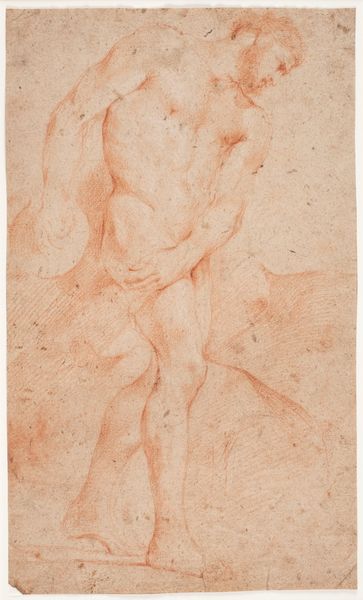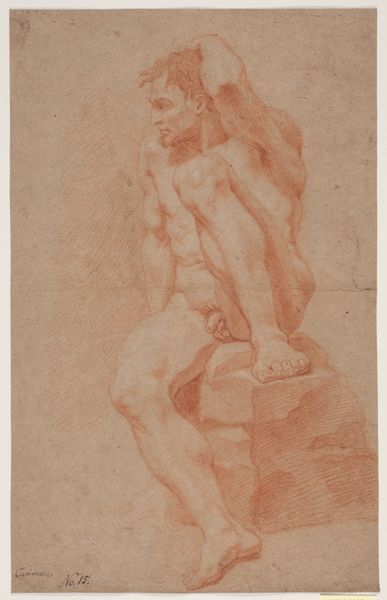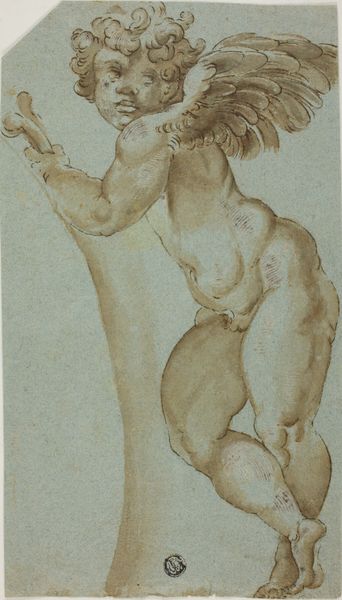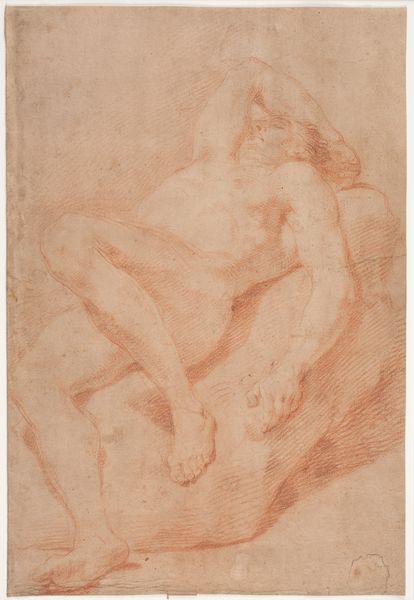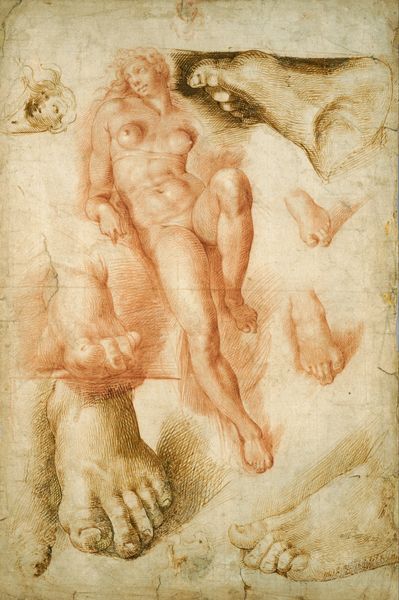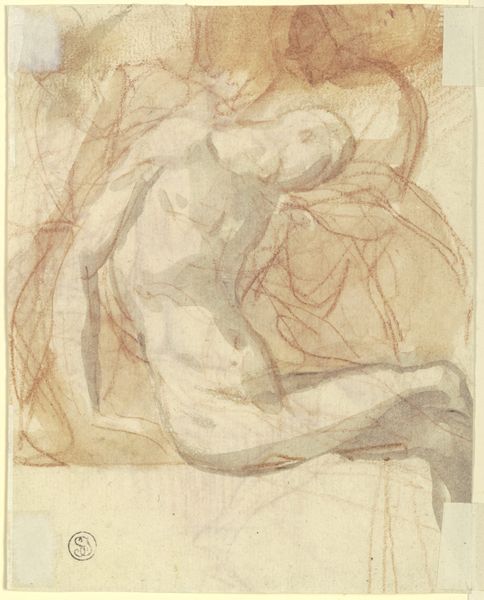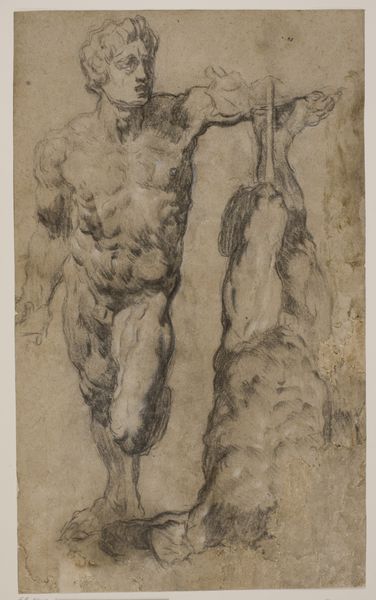
drawing, paper, ink
#
drawing
#
allegory
#
charcoal drawing
#
mannerism
#
figuration
#
paper
#
form
#
oil painting
#
portrait reference
#
ink
#
line
#
nude
Dimensions: height 46.8 cm, width 15.1 cm
Copyright: Rijks Museum: Open Domain
Curator: What strikes me immediately is the dynamism of the pose and the earthy palette of this study, dating from around 1555. It’s a drawing, in pen and brown ink, by Maarten van Heemskerck. It depicts Pluto with Cerberus. Editor: The muscularity is definitely eye-catching, isn’t it? But beyond the rather assertive display of male form, what do you make of Pluto's upward gaze and arm extension, and that writhing dog at his feet? It’s pretty melodramatic, in my view. Curator: Exactly. That drama speaks directly to the Mannerist style that Heemskerck was so adept at employing. We are dealing with a symbolic moment rendered for maximum emotional impact. He’s quite literally reaching, with that trident raised—his iconic emblem. I'd wager he’s striding forth from the underworld. It represents an emotional striving. The reaching towards ideals... Editor: So, that brings us to how an image like this functions culturally, right? Pluto, or Hades in the Greek tradition, carries so much cultural baggage. He’s the stern, unyielding master of the underworld, so loaded down with representations of mortality and judgment. And a subject incredibly fashionable during this period. But how does that context change the viewer's understanding, would you say? Curator: It deepens it, absolutely. Understanding Pluto's domain – a world of shadows and the afterlife—gives that upward thrust a poignant sense of defiance. Look closely. Cerberus, as you point out, isn't just "writhing". He is in chains. It speaks to that age-old struggle with morality that is intrinsic to this allegory. Van Heemskerck used these mythological subjects to explore how humanity should live in the shadow of a pagan past. It is a clear case of visual continuity through potent symbolism. Editor: Fascinating. It really illustrates how classical mythology remains powerfully relevant for this cultural moment. So much more than an artistic exercise. You get a glimpse of the societal values, fears and, as you say, continuity of historical motifs, within a relatively contained, performative scene. It almost offers us a stage from which the 16th century view unfolds. Curator: And with no detail spared on this grand stage, if I may add. Editor: A fitting point on which to leave our listeners. Thank you for elucidating Heemskerck’s compelling use of symbolism and that powerful allegory.
Comments
rijksmuseum about 2 years ago
⋮
The young, beardless Samson ripped a ferocious lion apart with just his bare hands. In Heemskerck’s time, this story was regarded as the forerunner (prefiguration) of Christ’s victory over the devil. Pluto, recognizable by his three-headed dog Cerberus, was the guardian of the underworld in classical mythology. In the 16th century he was also identified with the devil from Christianity.
Join the conversation
Join millions of artists and users on Artera today and experience the ultimate creative platform.




